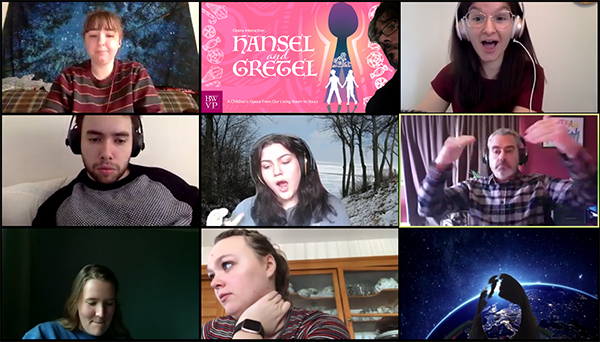by Jarrett Hoffman
ON TONIGHT:
At 7:30 pm, Les Délices’ SalonEra explores “Performer-Composers,” in particular the recent work, compositional viewpoints, and creative processes of three guest artists. Nicola Canzano introduces the 18th-century compositional practice of Partimento, Doug Balliett follows Bach’s legacy in composing a full year’s worth of cantatas, and Jonathan Woody previews his new commission for Les Délices. Watch a preview video here, and register here to view online and on demand for 48 hours after the debut.
THE CANON:
Three recent articles provide a snapshot into the grappling that is taking place over the idea of the classical music canon.
Joshua Kosman thoughtfully confronts the question of “which composers get one-name treatment” here in the San Francisco Chronicle.
Violinist Nigel Kennedy has withdrawn from a concert with the Chineke! Orchestra at London’s Royal Albert Hall over disagreements that include programming: he says that the radio station Classic FM insisted that he and the ensemble perform Vivaldi’s The Four Seasons rather than the intended tribute to Jimi Hendrix. Read more here from The Guardian.
And the Metropolitan Opera reopens today with Terence Blanchard’s Fire Shut Up in My Bones, the first presentation of a work by a Black composer in the organization’s 138-year history, as Zachary Woolfe writes in The New York Times.
TODAY’S ALMANAC:
Today we zero in on Hänsel und Gretel, the most famous opera by German composer Engelbert Humperdinck, who died on this date in 1921. The work has a humble backstory: it originated as four songs accompanying a puppet show put on by the composer’s nieces. It then expanded to a Singspiel with sixteen songs, and later to an opera. Stylistically, it’s notable for synthesizing two distinct sides of German music: one part Wagnerian influence, one part German folk songs.
YouTube contains several performances of the entire work, and many also of the famous and beautiful Abendsegen (“Evening Benediction”). Here’s a particularly lovely rendition of that excerpt, sung by Anna Lucia Richter and Fiona Lang, accompanied by a string quartet from the Gürzenich Orchestra Cologne in an arrangement by Martin Richter.
It’s fun to reminisce about some of the many local performances of Hansel and Gretel that have taken place over the past decade.
There was Jonathon Field’s dark approach to the work for Oberlin Opera Theater in 2013 (pictured above, and in contrast to his more traditional interpretation in 2003, as he told Mike Telin). On this occasion, the two title characters came from a dysfunctional and violent family. One delightful detail: the witch’s lopsided house was decorated with “masks of children’s faces like memorial plaques to those who have already passed through the witch’s oven,” as Daniel Hathaway wrote in his review.
In 2014, it was on to Baldwin Wallace Opera (above), where director Benjamin Wayne Smith conceived of the production as a fairy tale in which the audience could “find what they will in the story, whether they’re children enjoying exactly what they see or adults who are susceptible to subtle undercurrents” (Hathaway’s review here). As Smith pointed out in a preview conversation with Hathaway, “The opera is just not as dark as the original story…”
Five months later came a production from Nightingale Opera Theater set in the American Dust Bowl of the 1930s, and featuring The Witch as a drag role (review here).
The most recent one was innovative in its own particular way, unique to the time in which it was presented. In the spring of 2020, for their Senior Capstone project, the Baldwin Wallace Vocal Performance Class created a 30-minute version titled Opera Interactive, Hansel and Gretel, performed in English, with artwork submitted by students pre-K through Grade 5. (Below: a rehearsal taking place on Zoom.)
Take in the entirety of the project here, including each step of the way as the class inspired submissions of artwork from the children, and then of course the final product.
As music director Jason Aquila told Mike Telin in a preview, “There are things that we can take from a situation like this, like how to create a meaningful artistic product, and how to connect people in the bigger world.”







